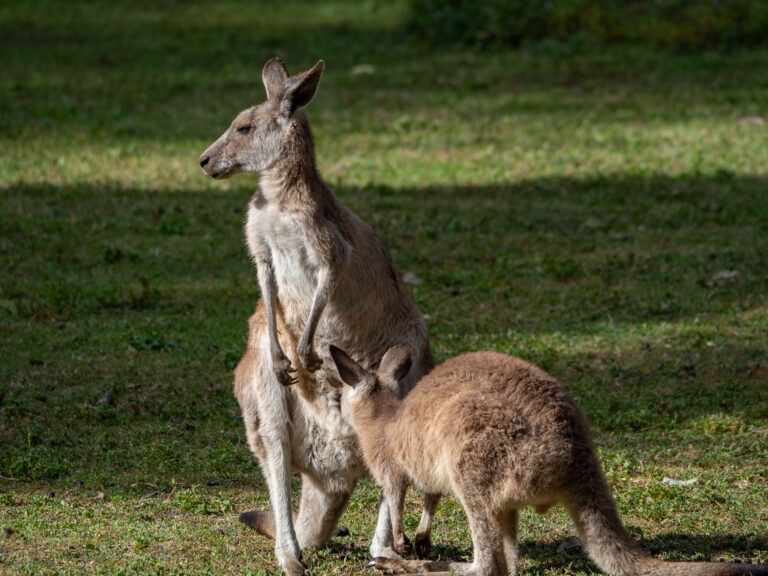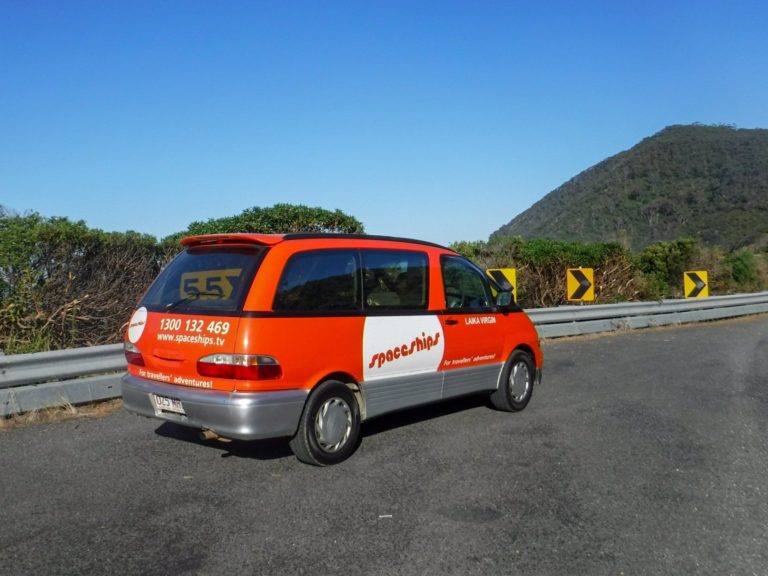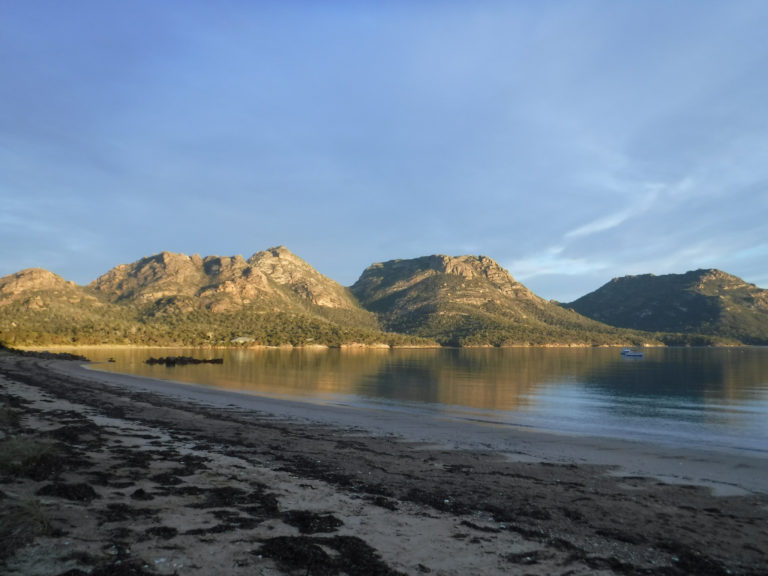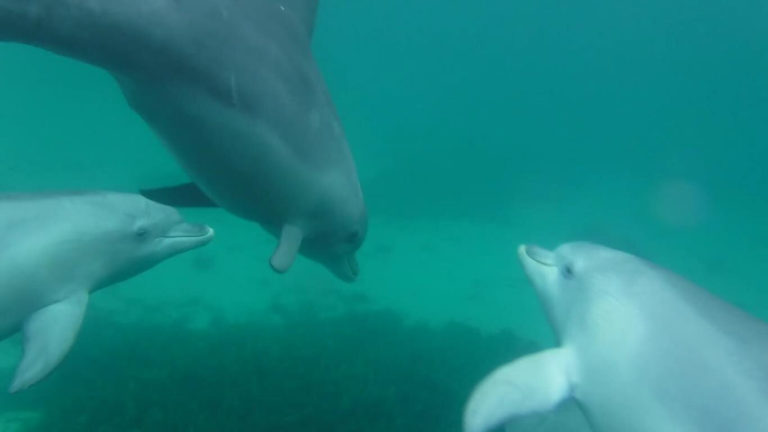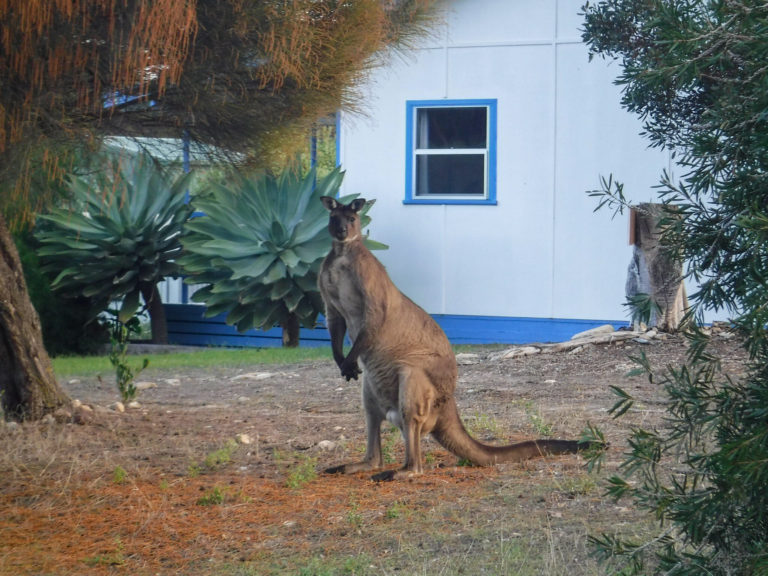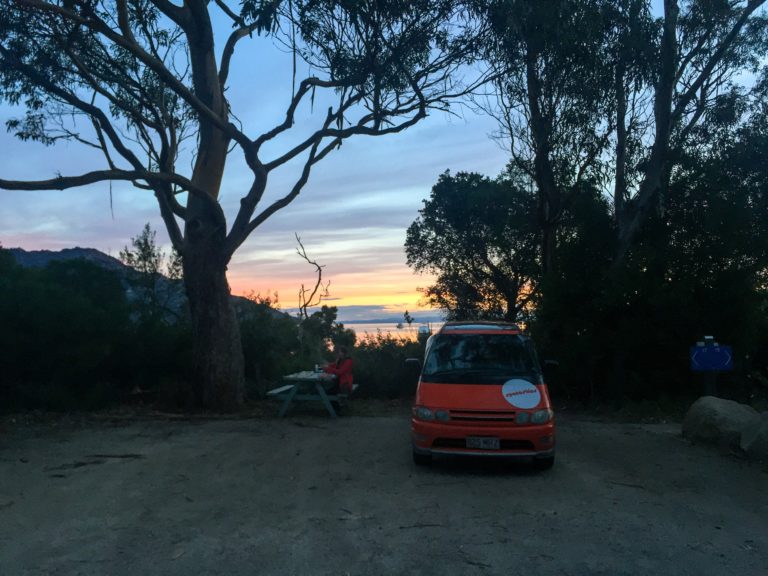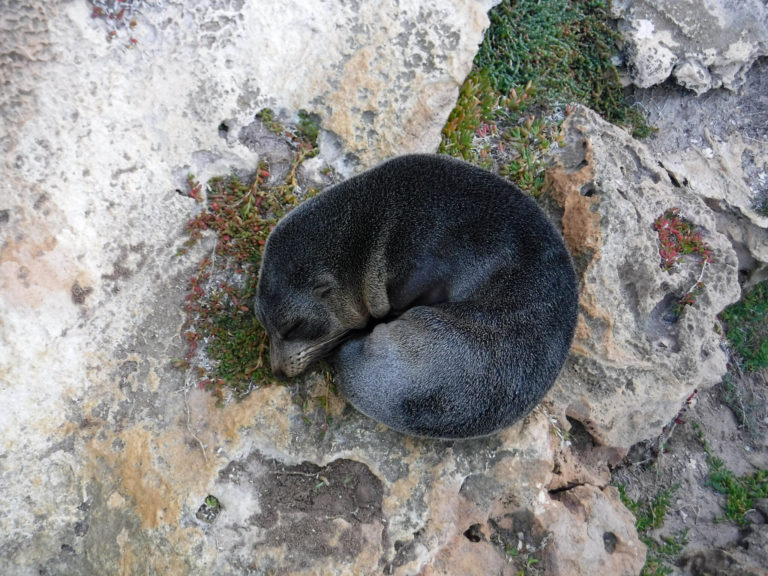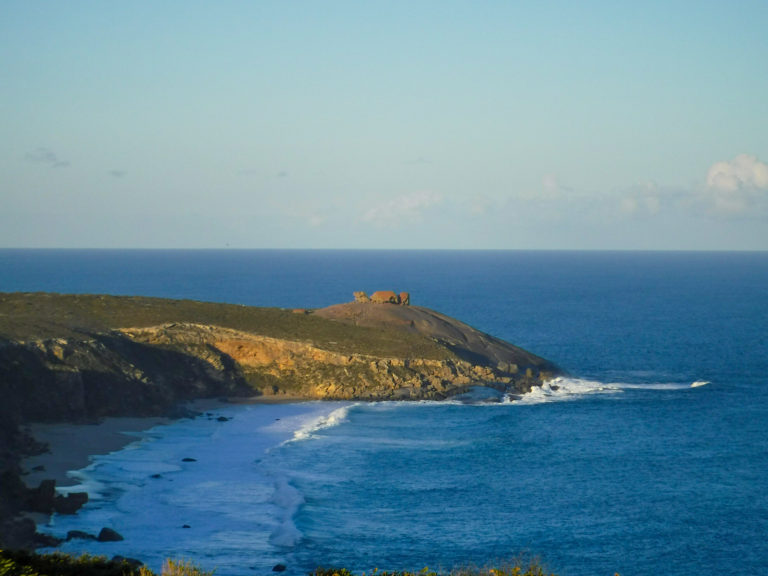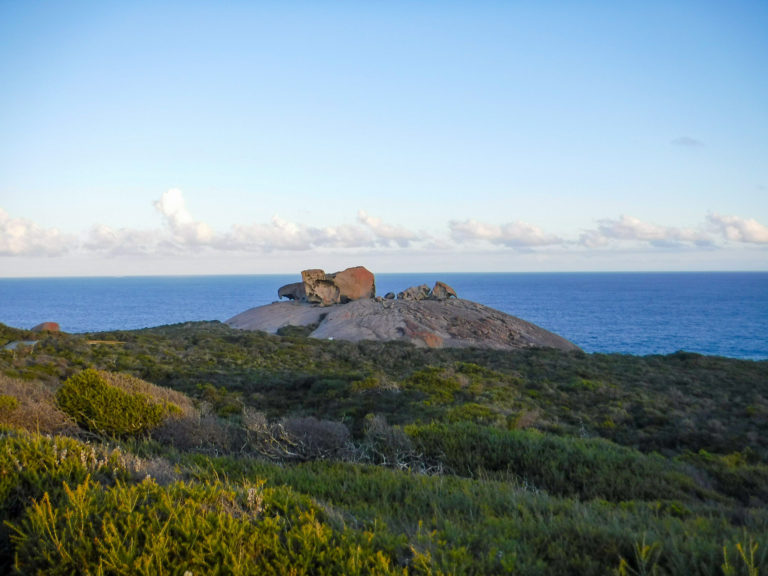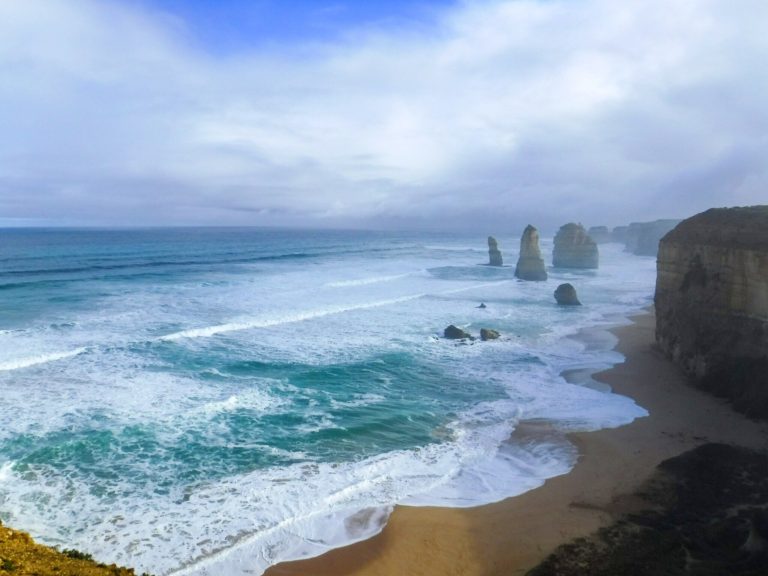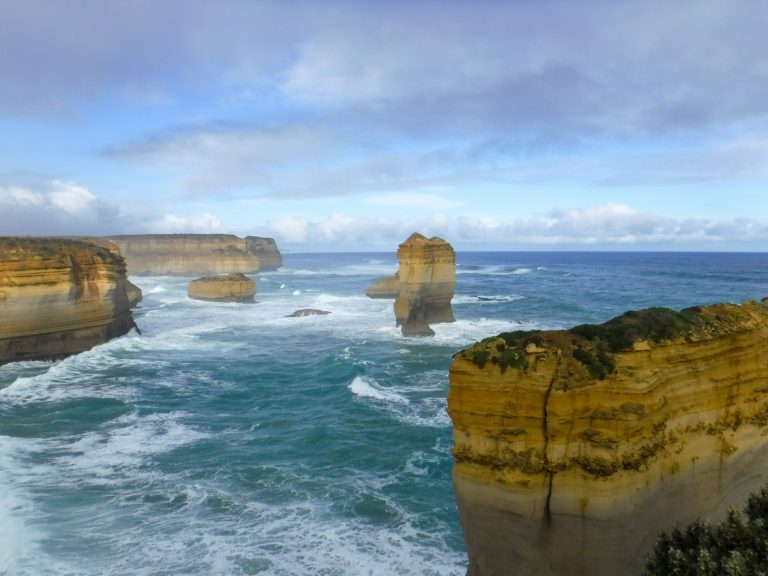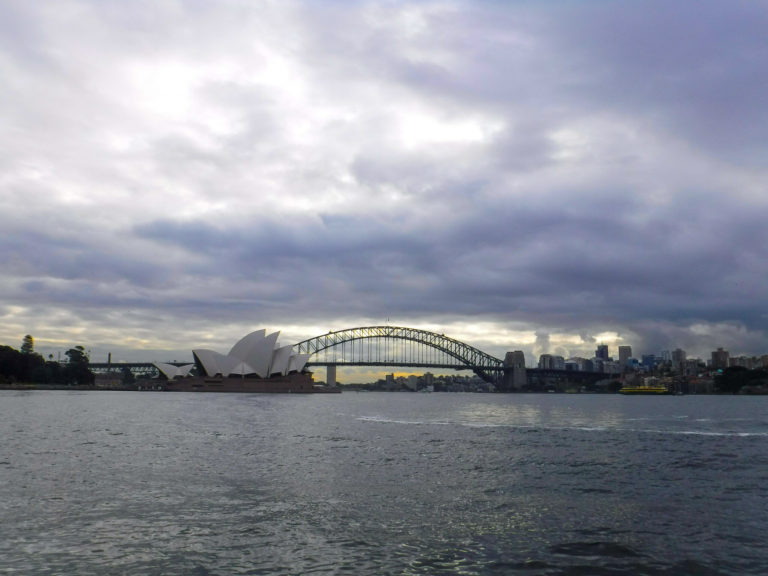The 23 Best Things to do in Tasmania
A complete guide to the best things to do in Tasmania, how to get here, what to know before you go, interactive map and more!
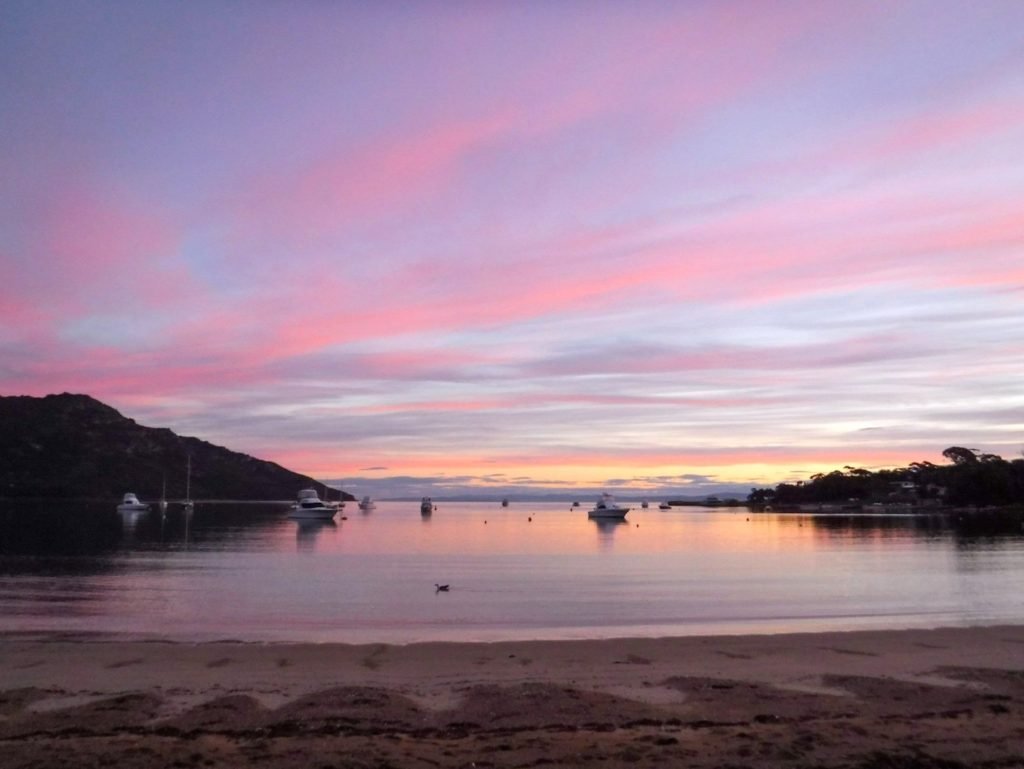
This post may contain affiliate links, which means we might earn a small commission on anything purchased through these links at no extra cost to you. Learn more on our disclaimer page.
Tasmania, or Tassie as it’s known locally, is Australia’s smallest state and an island that sits 300 kilometres south of the Australian mainland across the stormy Bass Strait. Its impressive landscape ranges from rocky, snow capped outcrops to pristine white-sand bays lined with crystal-clear water, and wild plains. Tasmania also boasts the world’s cleanest air and a lack of light pollution makes chances of spotting the Southern Lights a reality.
Almost half of Tasmania’s land mass lies in national parks and World Heritage Areas, so it’s no wonder Tasmania is the perfect getaway destination for nature lovers. While the thylacine, the famous Tasmanian tiger, is now extinct, animals such as wallabies, quolls, pademelons, echidnas and the iconic Tasmanian Devil are often spotted in the wild. Fur seals, whales and dolphins can regularly be spotted at sea and if you turn your eye to the sky, you may see white-bellied sea eagles or an Australasian gannet.
You could easily spend years in Tasmania and feel like you haven’t done it all. So here’s a list of all the best and unmissable things to do to ensure your visit to Tassie is perfect.
Time needed: 7-14 days.
When to go: Between December and February for sunny weather.
Weather: Averages of 0°C-10°C in the Winter and 15°C-22°C in the Summer.
Language: English.
Currency: Australian Dollar.
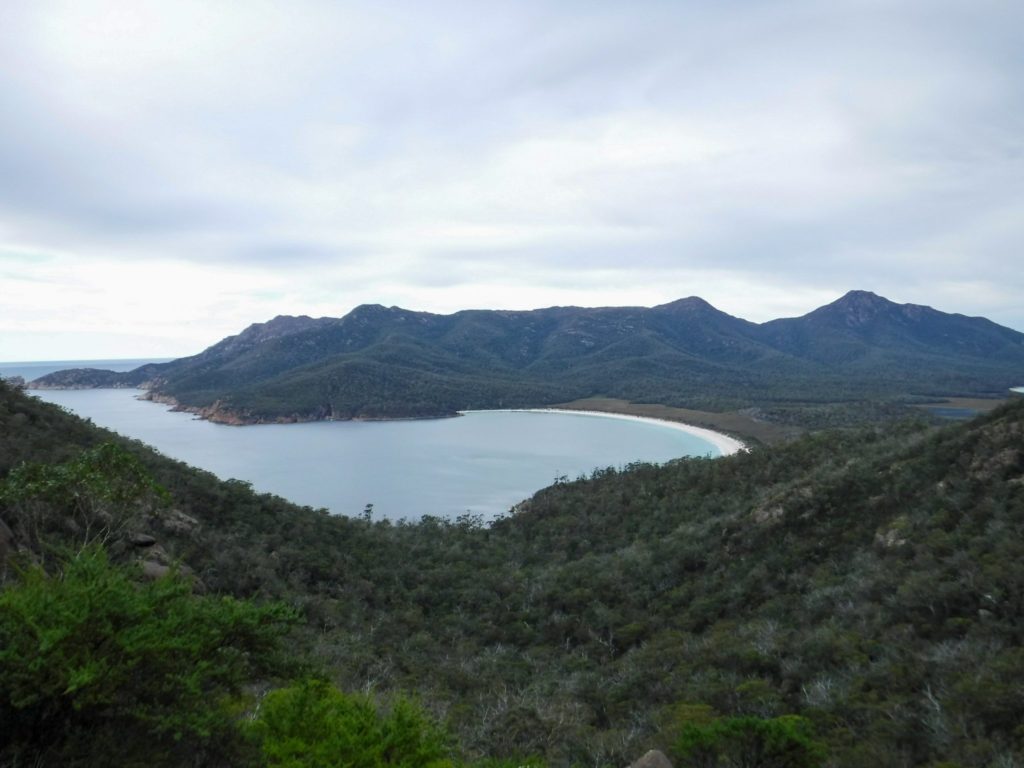
Things to do
1) Devonport
Devonport is the gateway to Tasmania and the town you’ll arrive into if entering Tasmania by ferry. Visit the Bass Strait Maritime Centre, which has exhibits about early explorers, shipwrecks and steamers or the Devonport Regional Gallery, which is housed in an old church and is dedicated to Tasmanian art. Now a museum, Home Hill was the residence of former Australian prime minister Joseph Lyons in the early 1900s and runs informative guided tours.
2) Don River Railway, Devonport
The Don River Railway is a volunteer-run vintage steam railway and museum in Don, a suburb of Devonport. It runs a passenger train ride from Don to Don Junction and return using part of the former Melrose line that ran between Don Junction and Paloona.
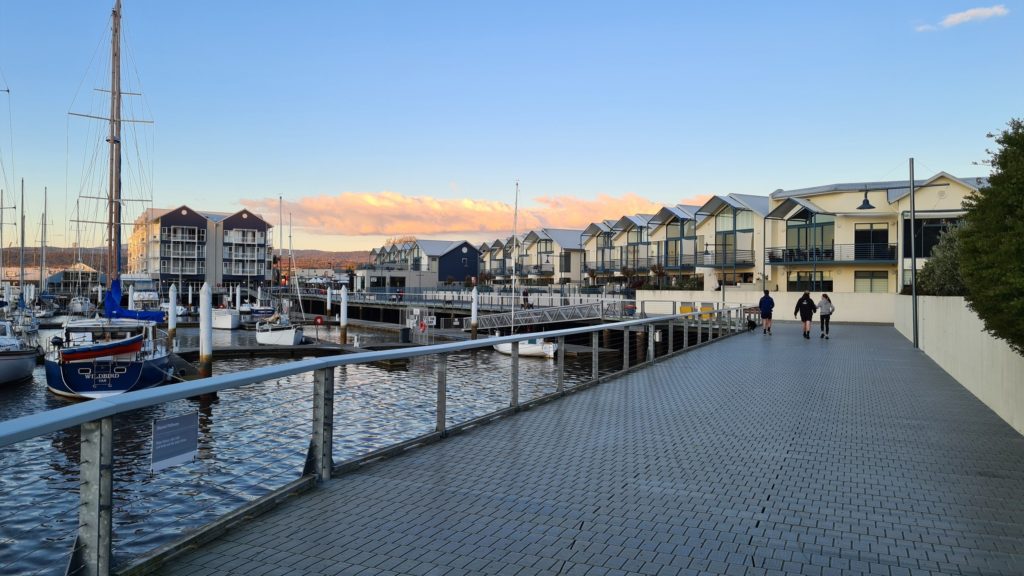
3) Launceston
This riverside city of Launceston is is Tasmania’s second major city and a vibrant hub for food and wine, culture and nature. Visit the Queen Victoria Museum and Art Gallery and learn about Tasmanian history through informative exhibitions. The museum is located in a 19th-century railway workshop while the art gallery is located over the river, near Royal Park. Take a stroll through Royal Park, which features a barbecue area, play space, skate park and outdoor exercise equipment, as well as boardwalks and sealed paths to the nearby Cataract Gorge reserve.
4) Cataract Gorge
Just 15 minutes walk from the city centre of Launceston, Cataract Gorge is a river gorge and one of the region’s premier attractions. Enjoy walking and hiking trails, as well as the world’s longest single span chairlift, an outdoor swimming pool, restaurant, gardens and suspension bridge. You’ll often find peacocks wandering around the grounds too. You can take a 50-Minute Cataract Gorge Cruise from Launceston with informative skipper’s commentary on the multi-award winning 1890’s style vessel, the Lady Launceston.
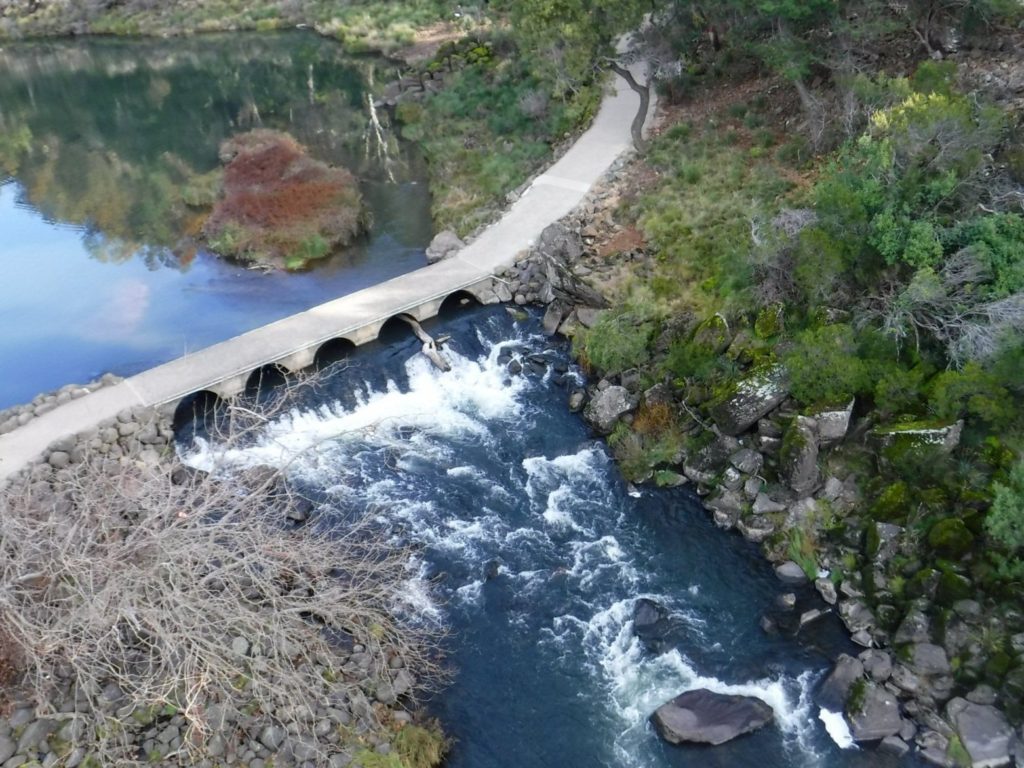
5) Tamar Valley Wine Region
Just 20 minutes north of Launceston on the West Tamar Highway towards Legana you’ll find the Tamar Valley Wine Route. Stretching over 60kms, this fertile valley of high-yielding vineyards is famous for its chardonnay, sparkling, pinot noir and aromatic whites. 32 vineyards makeup Tamar Valley Wineries which is the oldest wine-producing region in Australia, currently producing 40% of Tasmania’s premium quality wine.
Wine lovers should consider joining a Tamar Valley Wine Tour to learn more about the wines this area produces, as well as tasting a variety of local premium wines.
6) The Great Eastern Drive
The Great Eastern Drive extends between Orford and St Helens on Tasmania’s east coast. At around 176 km long, this is one of the most impressive road trips in the world. Roll past pristine white-sand beaches, crystal-clear turquoise waters and explore some of Tasmania’s best attractions on the way.
7) Four Mile Creek
Four Mile Creek is a small rural location within the local government area of Break O’Day and is one of the first stops on the Great Eastern Drive. Stroll along the beautiful Four Mile Creek Beach and marvel at the still, blue waters.
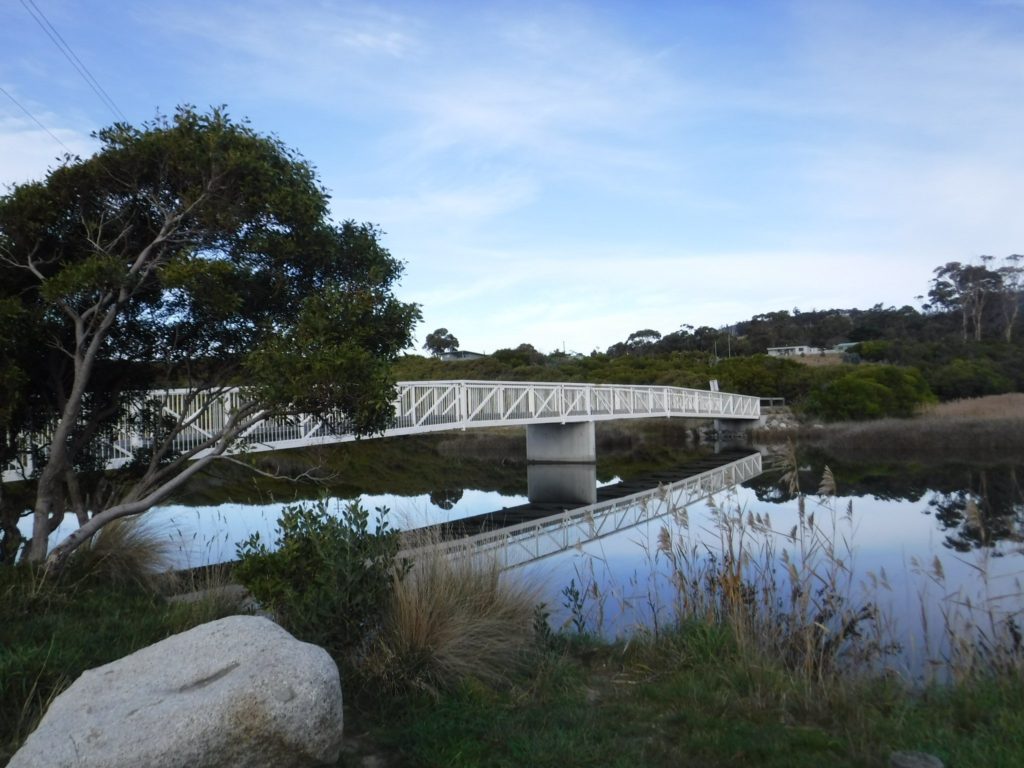
8) Bay of Fires
The Bay of Fires coastline stretches for 50 km from Eddystone Point in the north to Binalong Bay in the south. This stretch of coastline is characterised by pristine white beaches, clear blue waters and unique granite formations that are coloured bright orange by lichens.
Serious hikers can join a 4-Day Bay of Fires Walking Tour, which includes professional hiking guides, home cooked meals and 3 nights in a unique farm stay. If you have limited time, this 5-Day Tasmania West & East Coast Tour takes in the main Tasmania highlights, including the impressive Bay of Fires and Bicheno Blowhole.
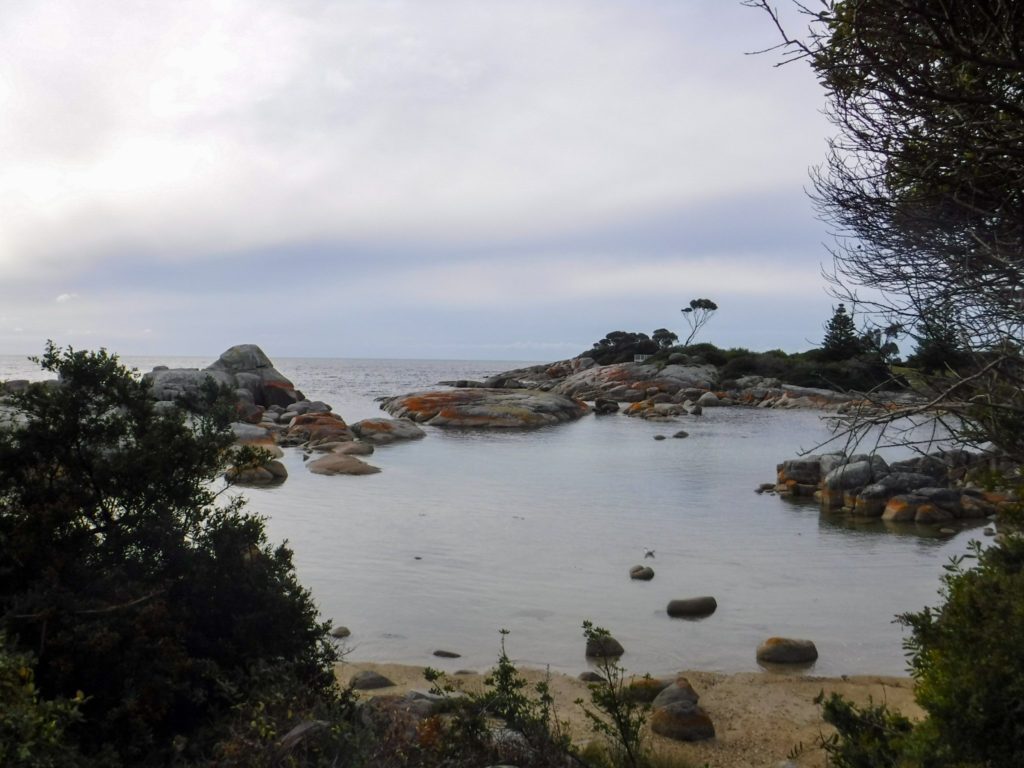
9) Bicehno Blowhole
Bicheno is a little town on the east coast of Tasmania on the Tasman Highway. The town is primarily a fishing port and beach resort. Along the beach you’ll find Bicheno blowhole. Millennia of erosion has caused a hole in the granite rocks which emits powerful jets of water into the air.
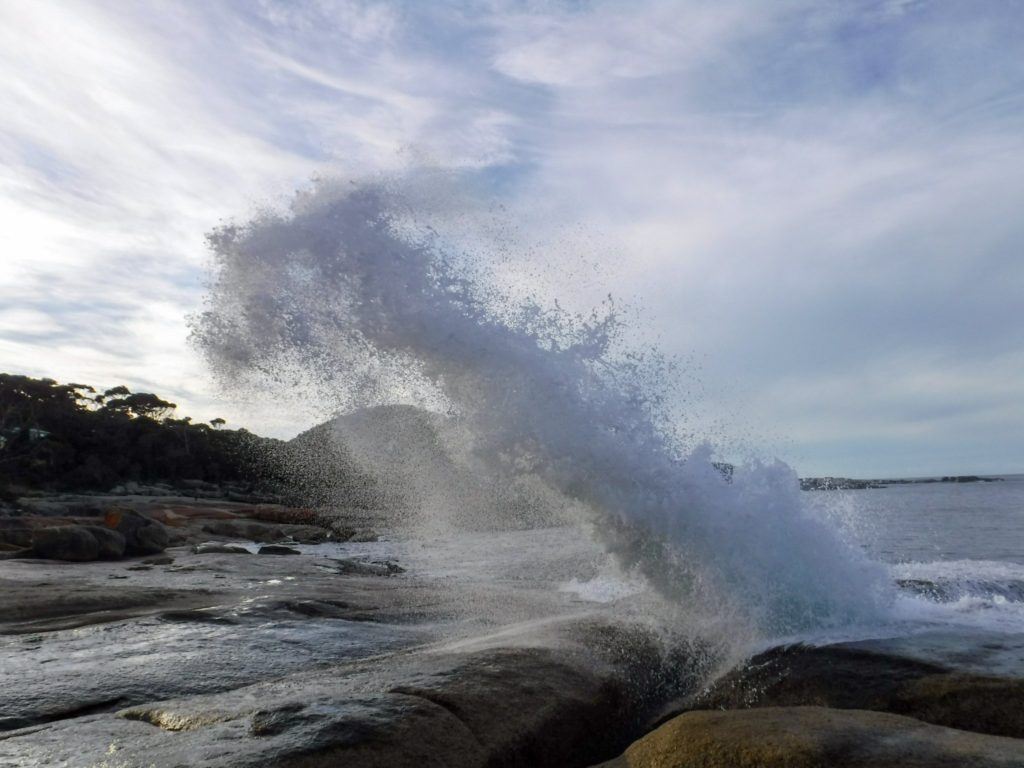
10) The Hazards
The Hazards are an impressive mountain range located in Freycinet National Park. The range is positioned between Coles Bay and Wineglass Bay and visible from afar due to the sheer size of the mountains. They are said to be named after local whaler, African-American Captain Richard Hazard.

11) Freycinet National Park
Freycinet National Park is a place of wild beauty and one of the most stunning places on earth. Full of hiking trials, incredible lookouts and breath-taking scenery, this national park is a must-visit destination in Tasmania. Explore Coles Bay and Wineglass Bay, Mount Amos and Hazards Beach. There are some great camping spots too! The Wineglass Bay Cruise with Lunch from Coles Bay is very popular and offers views of sea caves, hidden coves and granite cliffs, as well the opportunity to look for local wildlife, including sea birds, penguins, dolphins, seals and whales. The park is also full of picturesque hikes and you can join a guided walking journey to learn more about the area.
Read next: Thorough Guide to Tasmania’s Freycinet National Park

12) Maria Island National Park
Maria Island National Park is a World Heritage Australian Convict Site. Weave along the numerous trails on foot or by bike, or hike to the spectacular Painted Cliffs. Wildlife lovers can enjoy bird watching and whale spotting.
To get to Maria Island, you’ll need to take a 30-minute passenger ferry ride. The ferry leaves from the small town of Triabunna, which is about 1.5 hours by road from Hobart or 2.5 hours from Launceston.
Alternatively, you can join a Maria Island Cruise & Guided Walking Tour with Lunch, which takes you around Maria Island and the Ile Des Phoques, or the Island of Seals in English, as well as touring the historic Darlington convict penal site and giving you opportunity to spot wombats, dolphins, fur seals and more!
Adventure seekers should consider taking a Scenic Flight Experience of Wineglass Bay and Maria Island. This 3-hour experience is very good value for money and includes impressive views of Freycinet National Park and Maria Island, as well as a guided walking tour, gourmet lunch and opportunity to see Tassie’s local wildlife.
13) Tasman National Park
Here, waters from the Southern Ocean collide with the towering sea cliffs of the Tasman Peninsula, creating spectacular rock formations. Start at the Tessellated Pavement, a natural, geological phenomena. Visit The Blowhole (another blowhole), Tasman Arch (a tall natural bridge in the sea cliffs) and Devil’s Kitchen (a deep rocky trench). Enjoy the view from Waterfall Bay Lookout and descend the 115 steps to view the aptly named Remarkable Cave. Finish at Ship Stern Bluff, a globally renowned big-wave surfing location.
The formations can all be reached by car but by far the best views of the rugged coastline are from the park’s many bushwalks. Alternatively, you could join an eco-certified Tasman Island Wilderness Cruise. This 3-hour wilderness trip takes you by boat along the spectacular coastline between Port Arthur and Eaglehawk Neck in southern Tasmania. Leaving from Port Arthur, you will enter deep sea caves, archways, waterfalls and blowholes, with plenty of wildlife watching time. Animals you might see include fur seals, seabirds, dolphins and migrating whales. The wildlife cruise can also be combined with Port Arthur Historic Site or the Tasmanian Devil Conservation Park.
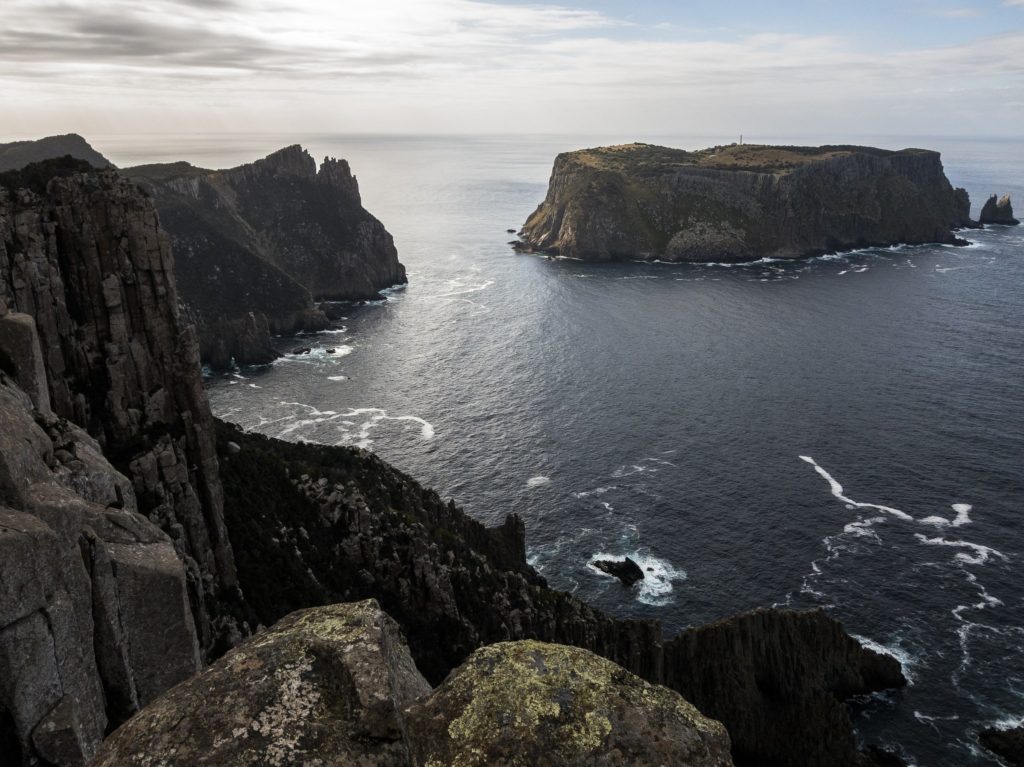
14) Port Arthur
Port Arthur is a village, historic site and a 19th-century penal settlement. It is now an open-air museum where you can learn more about the history of the town. The ruins include a huge penitentiary and the remaining shell of the Convict Church, which was built by inmates, as well as solitary confinement cells in the Separate Prison building, which was used to inflict mental punishment in place of floggings.
You can buy an entry ticket, which is valid for two consecutive days, and explore this UNESCO World Heritage Site on your own. Your ticket also includes a 40-minute introductory guided walking tour and 25-minute harbour cruise. If you don’t have your own transport, you can join a day trip. This popular Full Day Tour to Port Arthur from Hobart includes round-trip transfers and visits the Port Arthur Historical Site, Pirates Bay, Eaglehawk Neck, and Norfolk Bay, as well as highlights of the Tasman National Park.
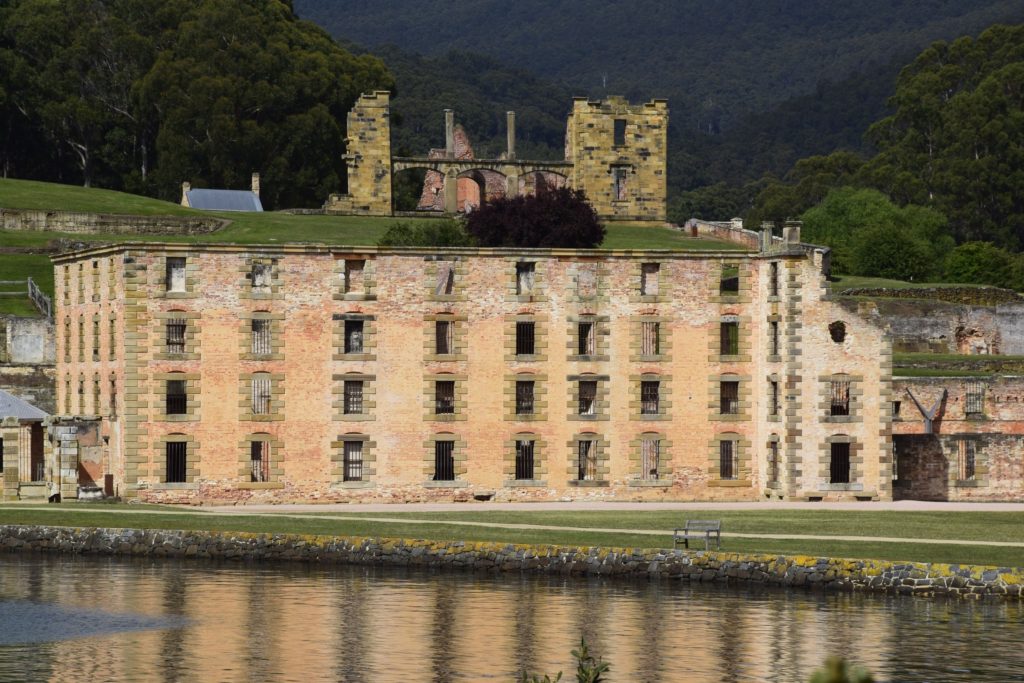
15) Richmond
Nestled in the heart of the Coal River Valley wine region, Richmond is a scenic town boasting an abundance of heritage listed colonial buildings. Here you’ll find Richmond Gaol, the oldest still intact gaol in Australia, and Australia’s Oldest Bridge. Built by convict labour, Richmond Bridge is Australia’s oldest surviving large stone arch bridge and is recognised as an outstanding historic place on the Australian National Heritage List.
16) Hobart
Located on the River Derwent, Hobart is Tasmania’s capital. Get your fill of culture at the MONA: Museum of Old and New Art, or escape the city in the tranquil Royal Tasmanian Botanical Gardens. One of the best ways to see the city is on the 24-Hour Hop-on Hop-off Sightseeing Bus, which takes 90 minutes to do a full circuit and has over 20 stops in various locations around Hobart. Alternatively, you could join a City Sightseeing Tour, which includes your MONA Ticket. Climbing Mount Wellington (kunanyi), a 1270m high mountain with sweeping panoramic views, is very popular too. Or you can choose to buy a Mt Wellington Hop-on Hop-off Shuttle Bus Pass, which makes ascending and descending the mountain much easier.
Hobart is located on the Southern Ocean and one of the most unique ways to see the city is by boat. This 2.5-hour Iron Pot Lighthouse Cruise explores the renowned waterways that influence Hobart’s lifestyle. You will visit Australia’s oldest lighthouse, circumnavigate Betsey Island and discover the city’s rich maritime past through informative commentary from a professional guide.
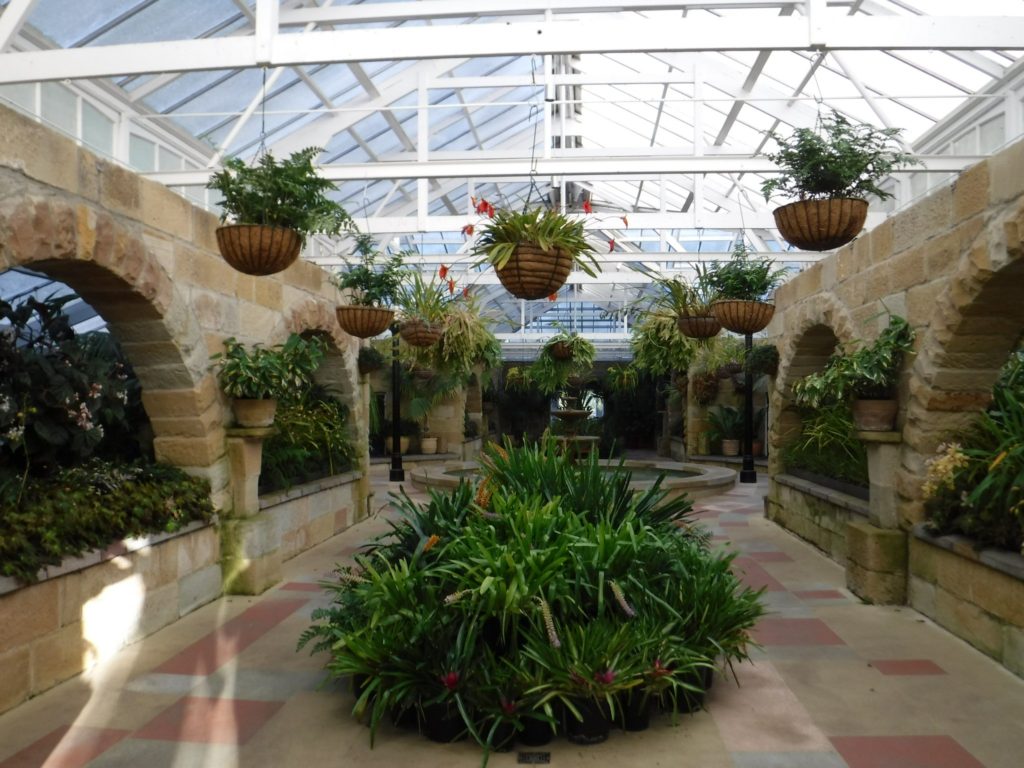
18) Mount Field National Park
This Tasmanian national park sits, 40 miles (64km) northwest of Hobart and features a landscape of eucalyptus temperate rainforest and alpine moorland. The highest peak reaches 1434 metres (4704ft) at the summit of Mount Field West. You can visit on a Day Tour to Mount Field National Park, which explores the Derwent Valley, Salmon Ponds, Mt. Field National Park and the iconic Russell Falls.
18) Trowunna Wildlife Sanctuary
There are a few wildlife parks to choose between in Tasmania, but one of the best is Trowunna Widlife Sanctuary. Rather than a zoo or park, this sanctuary is privately owned and focuses on conservation. The Sanctuary is currently involved in five separate conservation breeding programs that will ensure the survival of these threatened and endangered species. Explore the 70 acre site at your leisure, feed the free roaming Kangaroos or learn more about Tassie’s animals on the daily interactive guided tours.
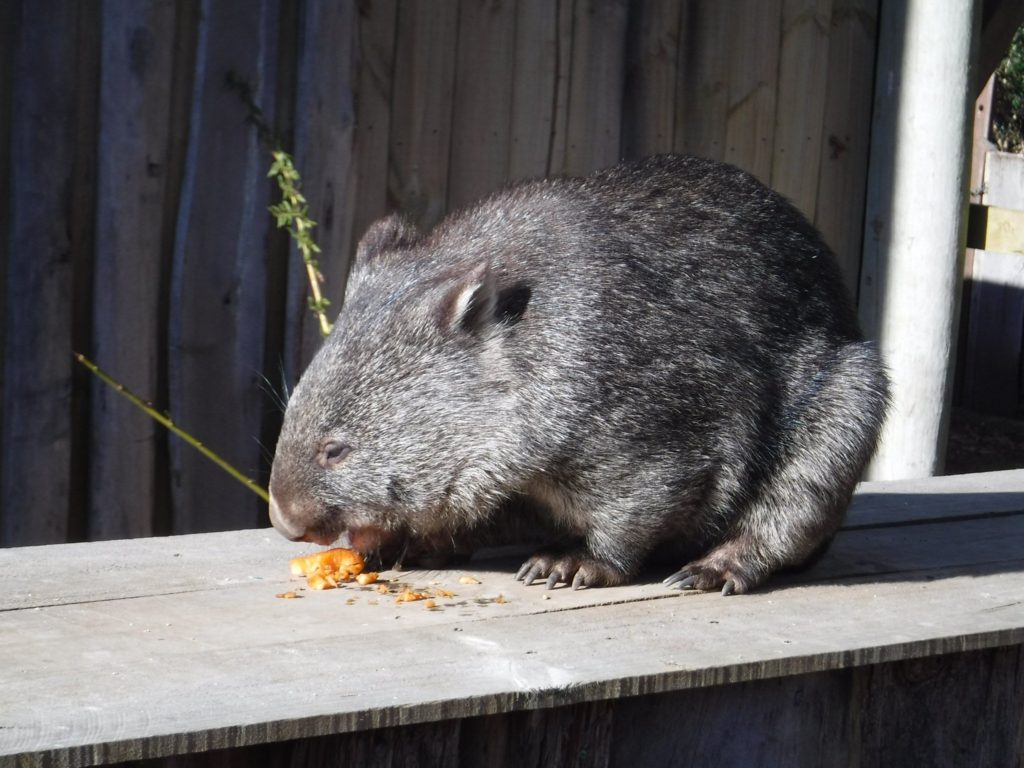
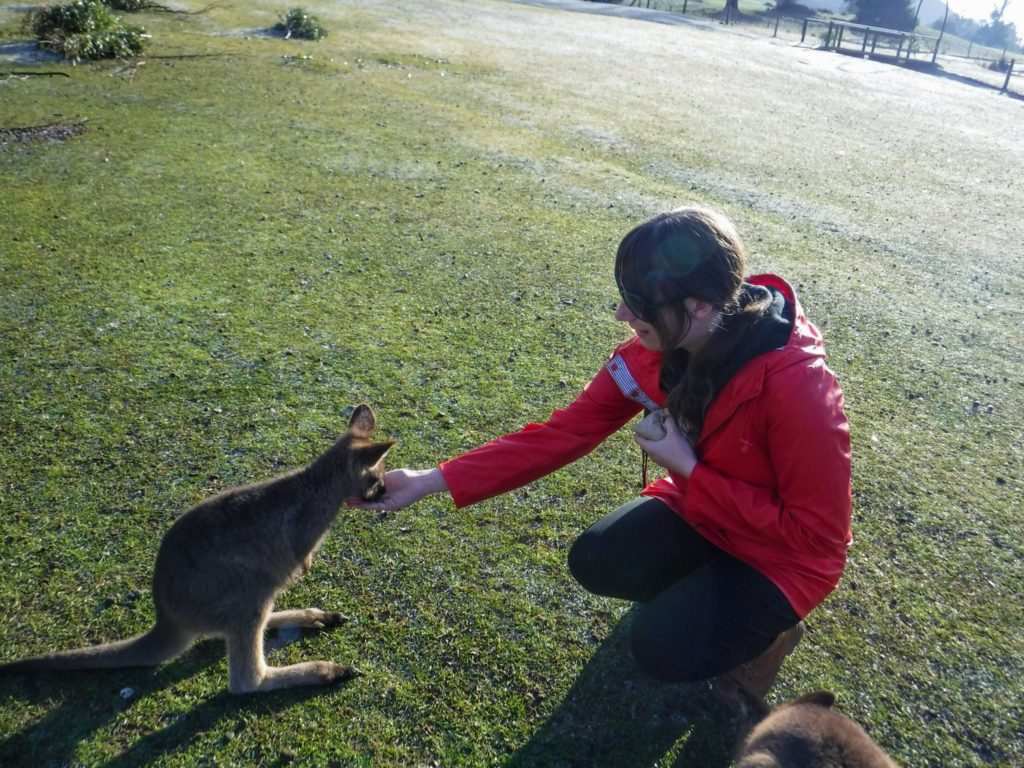
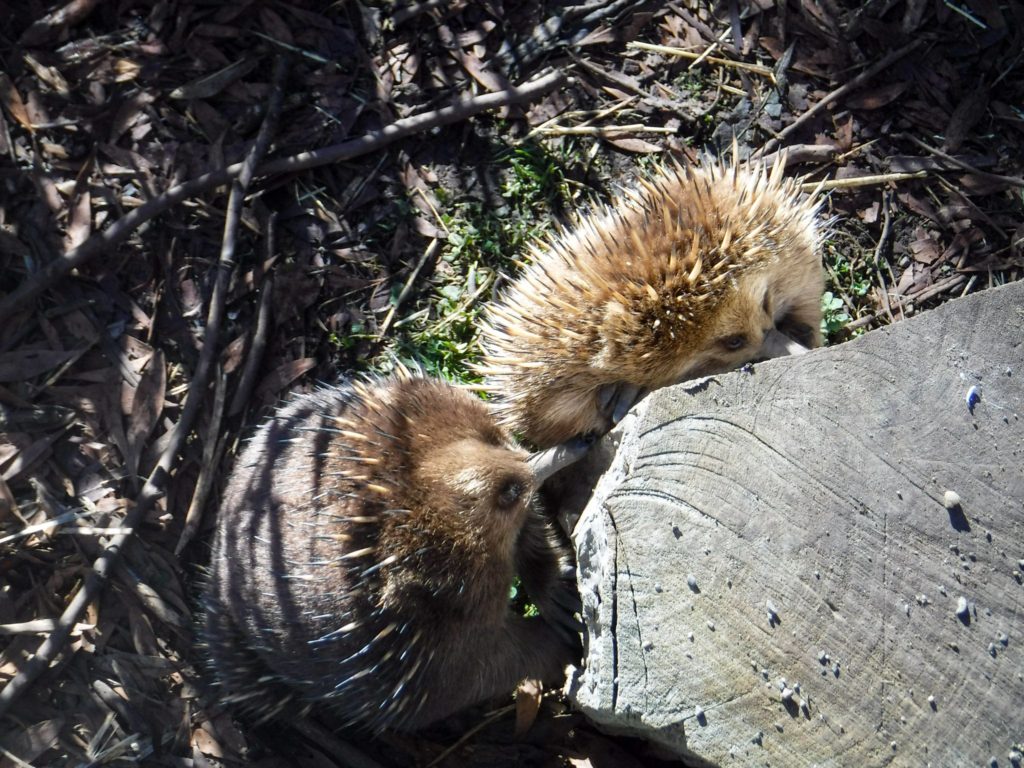
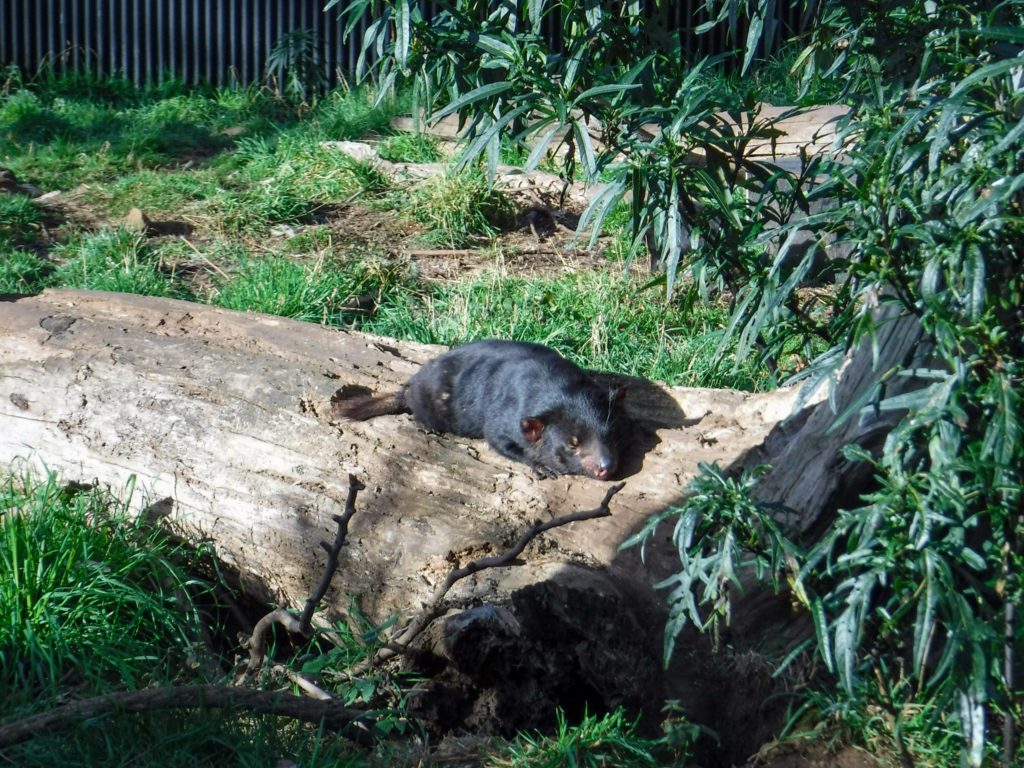
19) Bruny Island
Bruny Island, located off the coast of Hobart, is actually two islands joined by a narrow isthmus known as The Neck. It can be reached by a 20 minute ferry ride from the town of Kettering. There are plenty of hiking trails to enjoy or you can cruise around the island on a boat. If you don’t have your own transport, consider joining a Full-Day Bruny Island Food, Lighthouse & Sightseeing Tour.
You can learn about the Aboriginal people, sailors, whalers and explorers who played a major role in Bruny Island’s history at The Bligh Museum of Pacific Exploration. Or visit Cape Bruny Lighthouse, with tours leading visitors up the winding spiral staircase to the balcony for amazing views.
Foodies can enjoy Bruny Island Cheese Co. where you can sample traditional European cow’s and goat’s milk cheeses, and Bruny Island Premium Wines. You can also pick your own strawberries, raspberries, blackberries and blueberries at Bruny Island Berry Farm. A Bruny Island Gourmet Sightseeing Day Tour is perfect for those wishing to visit artisan producers and taste local produce.
Bruny Island is also one of the best places in Tasmania to see whales! Wildlife lovers should join a Bruny Island Wilderness Coast Eco Cruise Day Tour which includes a 3-hour wilderness cruise where you can see seals, dolphins, and whales. You’ll also visit Friar Rock, home to over 1000 Australian Fur Seals, as well as the blow hole at Breathing Rock, stunning sea caves and impressive rock formations. If you have limited time, you can book onto a Bruny Island Wilderness Cruise only.
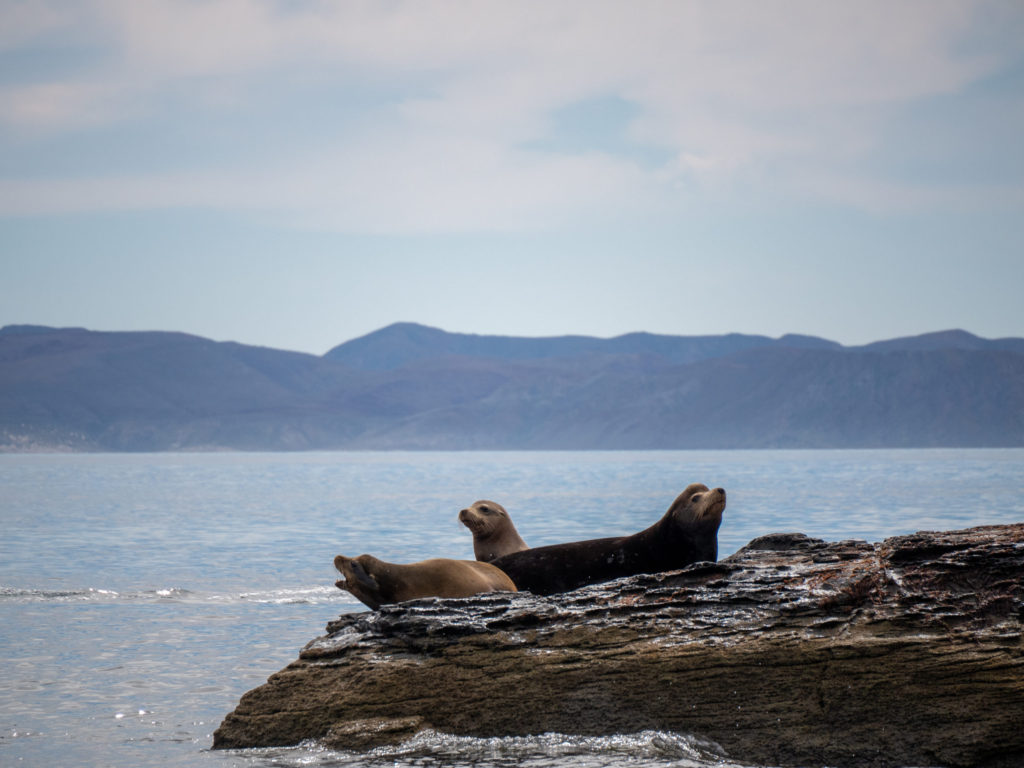
20) Whale Watching
Most whale sightings occur on Tasmania’s east coast, and most whale watching cruises depart from Frederick Henry Bay and Great Oyster Bay. The largest wildlife tour operator is Pennicott Wilderness Journeys. They are a sustainable tour company in Tasmania and are Ecotourism Australia accredited. Their most popular wildlife tours depart from Hobart, Freycinet National Park and Port Arthur to Wineglass Bay, Bruny Island and the Tasman Peninsula.
We’ve shortlisted a few of the best wildlife spotting tours in Tasmania below:
From Hobart:
- Bruny Island Wilderness Cruise
- Bruny Island Wilderness Coast & Cruise Day Tour
- Tasman Peninsula Tour, Cruise & Port Arthur Historic Site
- Tasman Peninsula Day Trip with Cruise & Devil Conservation Park
From Port Arthur:
From Coles Bay:
Wildlife you may see on a Tasmania Wildlife Cruise include:
- Long-finned pilot whales
- Common dolphins
- Sperm whales
- Bottle-nosed dolphins
- Killer whales
- Pygmy right whales
- Humpback whales
- Southern right whales
- Blue whales
For the best chance to see Humpback Whales or Southern Right Whales (the most common visitors), time your visit to Tasmania between May to July and September to November.
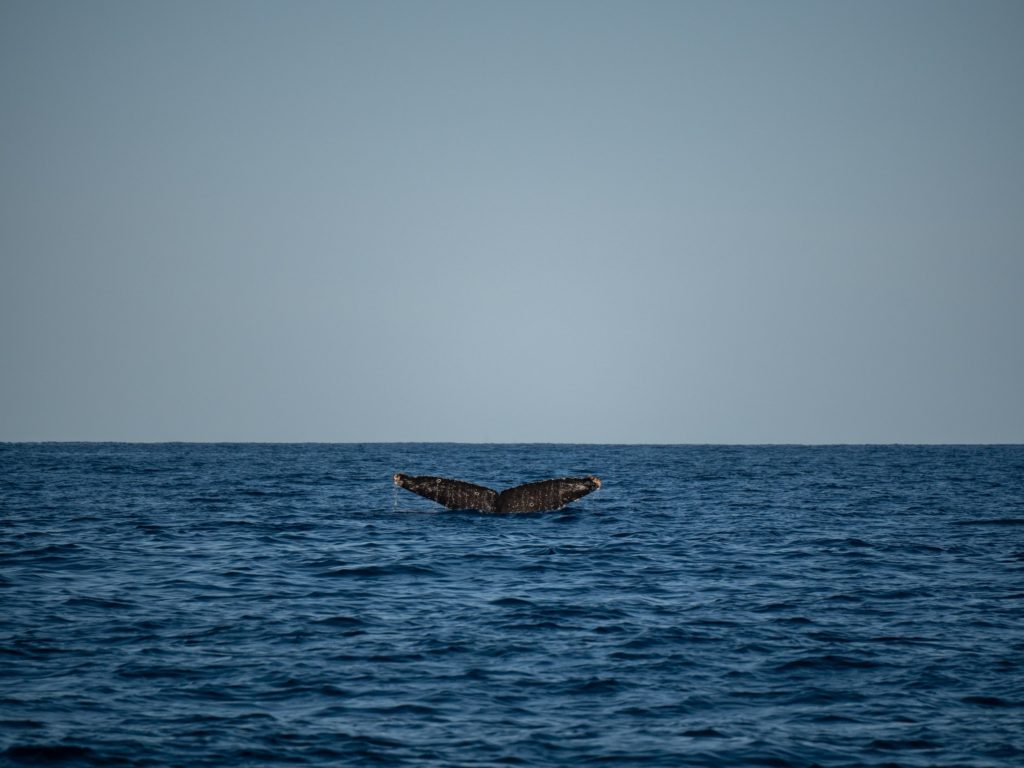
21) Lake Gordon
Lake Gordon is a man-made reservoir created by the Gordon Dam, located on the upper reaches of the Gordon River. This impressive feat of engineering was completed in 1974 and is the tallest dam in Tasmania. The dam wall is 140 metres high and you can descend the 197 steps from the car park to walk on the wall.
22) Cradle Mountain
Cradle Mountain is a place of exceptional natural beauty in the heart of the Tasmanian Wilderness World Heritage Area, dominated by 1,616 metre high Mount Ossa (the highest point on the island). Here you’ll find an abundance of wildlife, including Tasmanian devils, quolls, platypus, echidna, wombats and the highly inquisitive black currawong. Climb to the Cradle Summit or just enjoy exploring Lake St. Clair National Park. Hikers can choose between a variety of routes, including the 80km, 5-6 day Overland Track, or easier paths, like the 10 minutes Rainforest Walk.
You can join a Cradle Mountain Small-group Day Trip from Launceston, which includes transfers and lunch, as well as a professional guide. You’ll visit all the main sites, including the Dove Lake circuit walk, Waldheim Chalet and the Weindorfers forest walk.
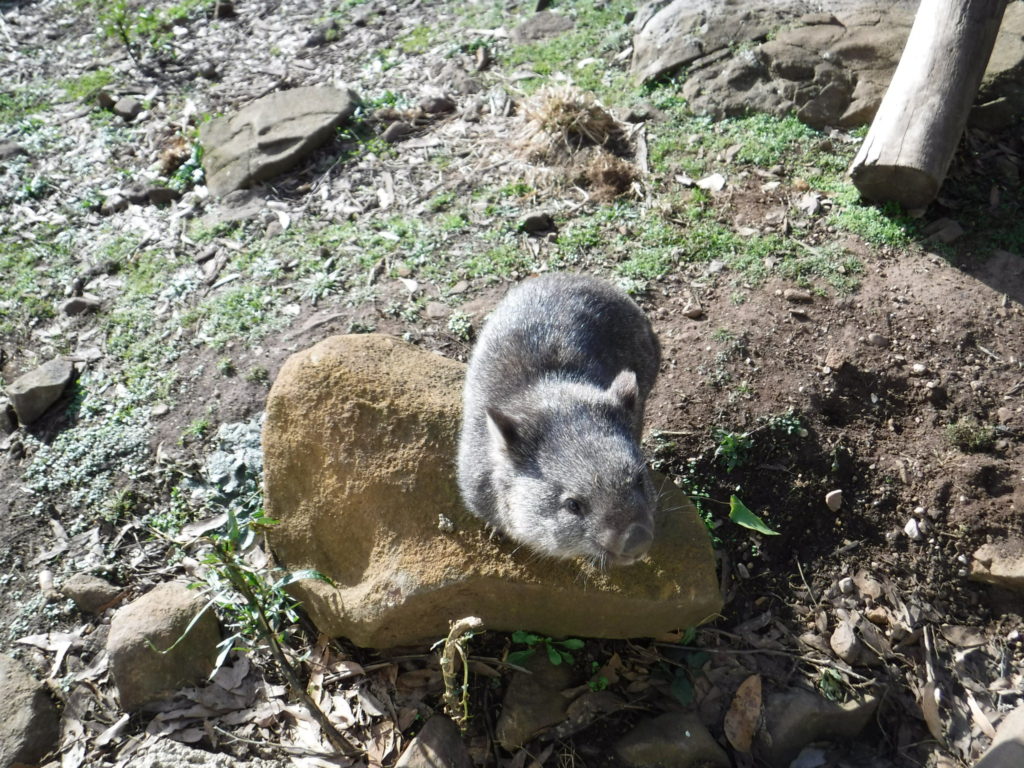
23) See the Southern Lights
Seeing the Northern or Southern Lights is a once in a lifetime experience. For the best chance to see the Aurora Australis in Tasmania, you’ll need to visit in winter, between May and August. Some of the best spots to see the Southern Lights in Tasmania include:
- Rosny Hill Lookout
- Mount Nelson Signal Station
- Howrah Beach
- Mount Wellington (kunanyi)
- Howden Boat Ramp
- Tinderbox Beach
- Cremorne Beach
- Clifton Beach
- Goat Bluff Lookout
- Calvert’s Beach
- Gypsy Bay / Primrose Sands
- Trial Bay Boat Ramp
- Cradle Mountain
- Bruny Island
- Tourville Lighthouse
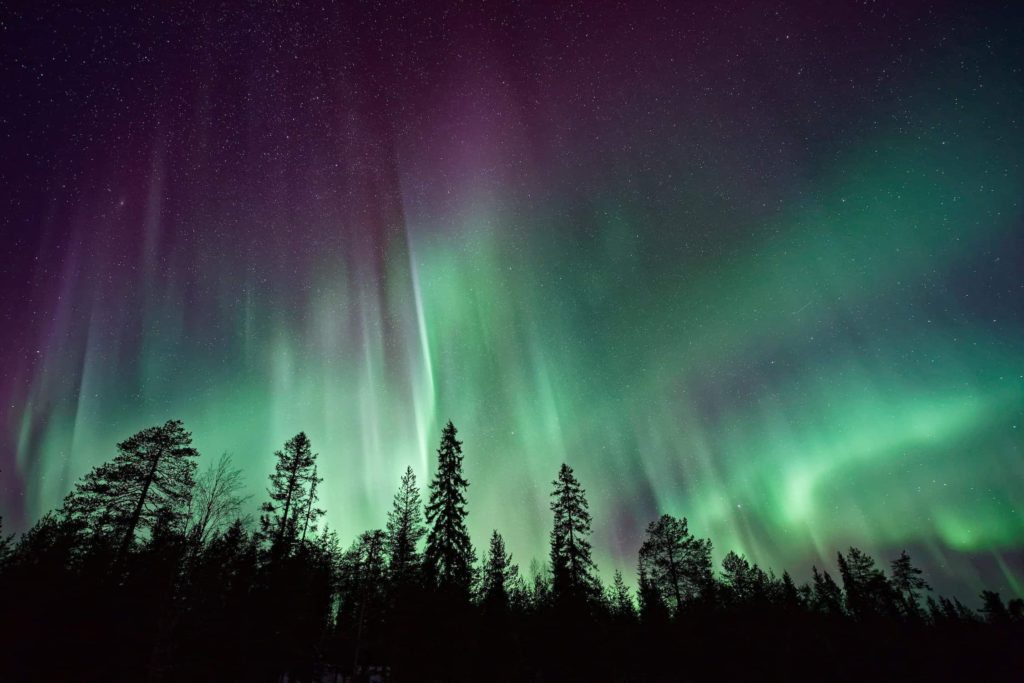
Interactive Tasmania Map
What to know before you go
You need to pay for a park pass to enter national parks in Tasmania. Prices can be found below.
Daily Pass – up to 24 hours, excludes Cradle Mountain
Per vehicle (up to 8 people): $40.00
Per person (under 5 years no charge): $20.00
Icon Daily Pass – Cradle Mountain only (includes shuttle service)
Adults (18 years and over): $25.00
Children (5-17 years, under 5 years no charge): $10.00
Family (2 adults, 3 children): $60.00
Holiday Passes – up to 2 months (includes Cradle Mountain)
Per vehicle (up to 8 people): $80.00
Per person (under 5 years no charge): $40.00
Drones are not permitted to be used within Tasmanian national parks or reserves.
A lot of walks are often on steep and on loose gravel surfaces so hikers are advised to wear sturdy footwear and pack supplies accordingly.
Drive cautiously at dusk to dawn as this is when wildlife is most active. It is recommended that you do not exceed 60 km/h and that you avoid driving at night.
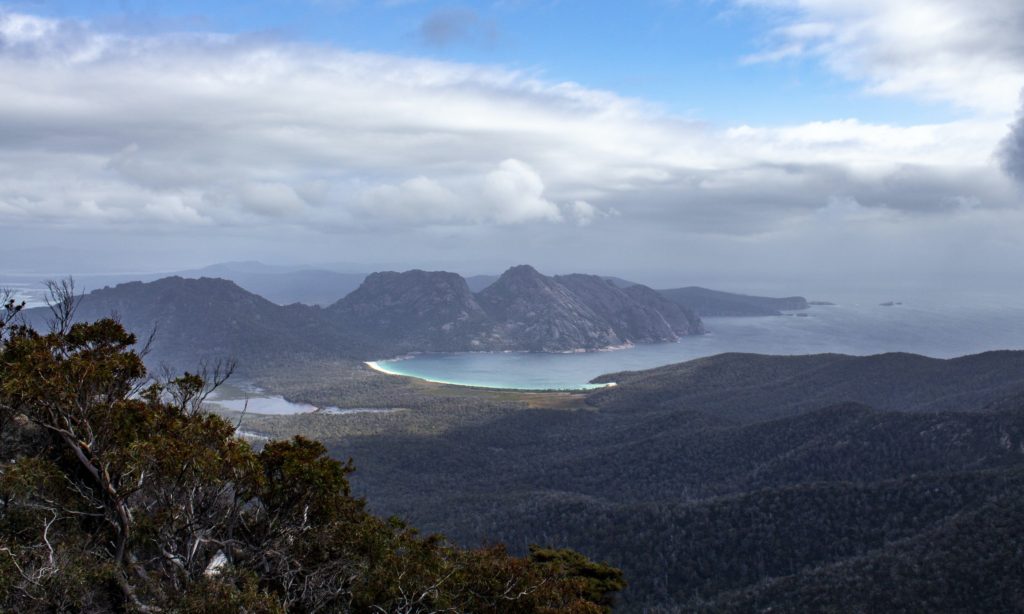
How to get to Tasmania
As an island, Tasmania is only accessible by boat or plane.
Regular flights depart from Melbourne, Sydney, Adelaide and Brisbane and fly direct to Hobart and Launceston. Direct flights are available from the Gold Coast, and Perth to Hobart and Launceston, as well as from Melbourne to Wynyard (Burnie), Devonport, King and Flinders Islands.
We recommend travelling to Devonport from Melbourne on the Spirit of Tasmania ferry. This method has the added benefit of letting you bring your own car and making the most of Tasmania’s road trip potential. Even better, if you bring a caravan or campervan you have your transport and accommodation rolled into one!
We would also HIGHLY recommend hiring a Spaceship from Melbourne for your journey. These family-sized cars are converted into camper-cars and are a smaller and much cheaper option than hiring a campervan (although they do offer these as well). And, because your campervan is actually a car, you can enjoy a cheaper crossing rate on the ferry! You can find out more here.
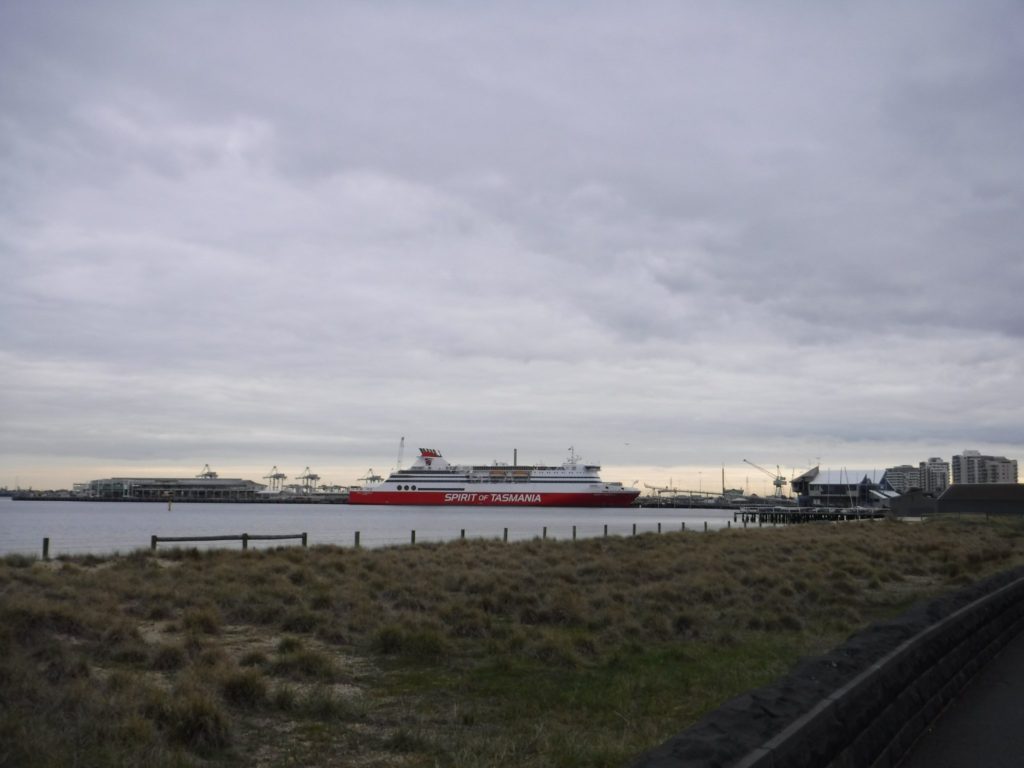
The best Multi-day Tasmania Highlights Tours
If you don’t have your own car, it can be difficult to get around and see all that Tasmania has to offer. Whether you’re on a budget or simply low on time, multi-day tours are a great way to see all the highlights of Tasmania with a professional guide. Here are some of the best multi-day tours in Tasmania:
3.5-Day Strahan, Cradle Mountain, and Mt Field Tour
5-Day Tasmania West & East Coast Tour
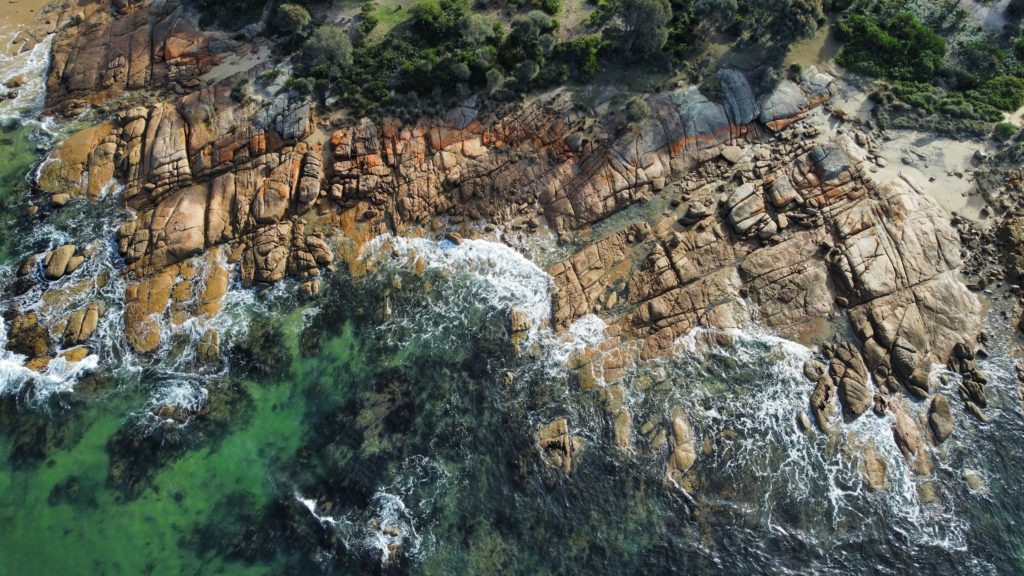
Where to stay in Tasmania
Tasmania Accommodation ranges from basic camping to luxury eco-retreats. There are plenty of hotels in Tasmania, as well as self-catering accommodation and unique stays.
Hobart, the capital, and Launceston are two vibrant cities with a range of accommodation that provide good bases to explore the rest of the island.
Coles Bays a popular holiday town and the gateway to Freycinet National Park. Framed by the rugged pink-hued granite peaks of the Hazards and the sheltered waters of the iconic Wineglass Bay, this is the perfect base to explore one of Tasmania’s most beautiful parks.
Cradle Mountain is the perfect mountain getaway destination, featuring snow-capped mountains and craggy landscape, as well as an abundance of Tassie wildlife.
One of the best ways to experience Tasmania is to camp, and there is great range of camping spots for tents and campervans alike. There are more than 50 caravan parks around the state, some with private ensuite facilities for caravan-motorhome travellers and others that are more basic.
We’d recommend downloading the WikiCamps app. This app shows you all the campsites in Australia and includes useful information like price and facilities. You can filter to find free campsites and it also lists all the public toilets available, which is pretty vital when camping.
Note: Temperatures can get quite low in winter so factor this in if you’re planning to camp in a tent or motorhome.
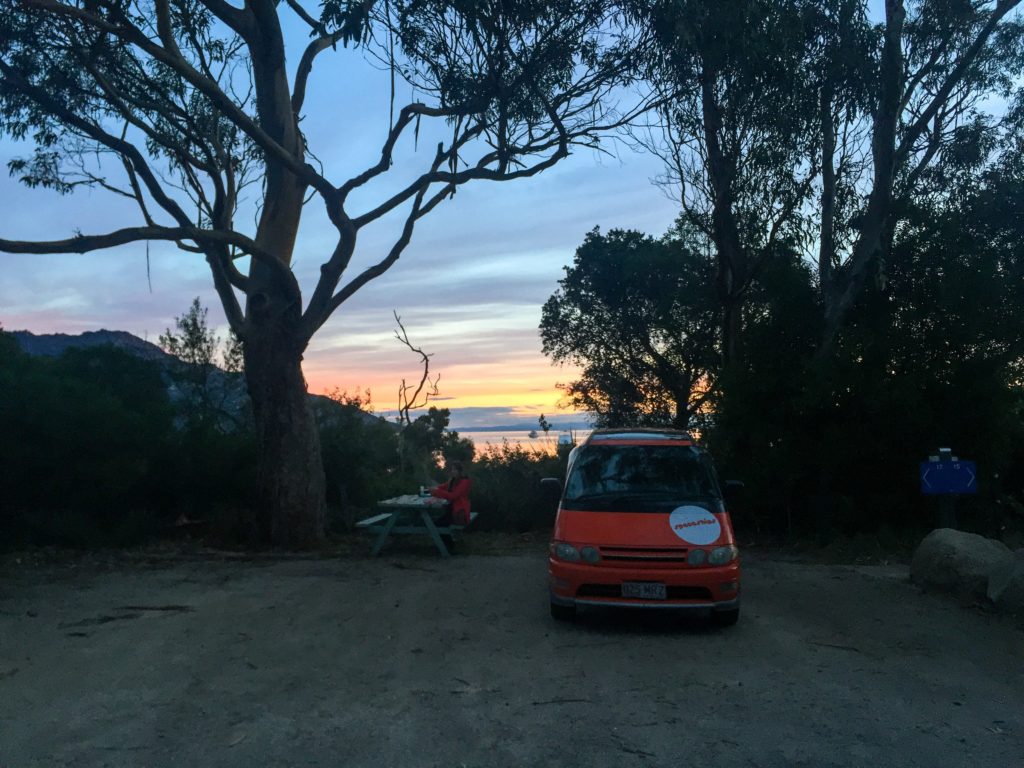
Read next:
The Thorough Guide to Tasmania’s Freycinet National Park
The Thorough Guide to Australia’s Kangaroo Island
Everything you need to know about Swimming with Wild Dolphins on Australia’s Kangaroo Island
Camping in a Compact Camper-Car in Australia
Check us out on social media!
Check us out on social media!
Check us out on social media!
